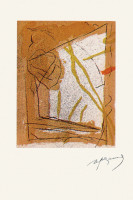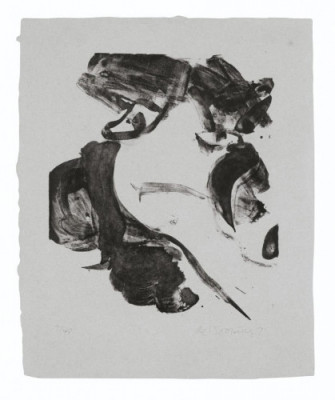
Details
Artist
Styles
// Albert Ràfols-Casamada's Jardí-5 (1985) is a drypoint print that showcases his signature abstract and gestural style. The triangular composition features intersecting lines and organic forms, creating a sense of dynamic movement and spontaneity. The sparse, black etchings on the light background convey an airy and delicate feel, while the irregular marks suggest a play between nature and abstraction, reminiscent of a garden's organic chaos. This limited edition print, produced in an edition of 50, highlights Ràfols-Casamada's ability to merge simplicity with expressive power, inviting viewers to engage with the poetic minimalism of his work.
Jardí-5, 1985
form
Medium
Size
38 x 56 cm
- Inches
- Centimeters
Edition
Price
- USD
- EUR
- GBP
Details
Artist
Styles
// Albert Ràfols-Casamada's Jardí-5 (1985) is a drypoint print that showcases his signature abstract and gestural style. The triangular composition features intersecting lines and organic forms, creating a sense of dynamic movement and spontaneity. The sparse, black etchings on the light background convey an airy and delicate feel, while the irregular marks suggest a play between nature and abstraction, reminiscent of a garden's organic chaos. This limited edition print, produced in an edition of 50, highlights Ràfols-Casamada's ability to merge simplicity with expressive power, inviting viewers to engage with the poetic minimalism of his work.
- Recently Added
- Price (low-high )
- Price (high-low )
- Year (low-high )
- Year (high-low )
Albert Ràfols-Casamada
Portfolio 12th Anniversary Of Galeria Joan Prats , 1988
Limited Edition Print
Lithograph
EUR 500
What is Gestural?
Gestural art is a term that describes painting with freely sweeping brushstrokes. The primary goal of gestural art is to allow the artist to physically express emotional impulses. The varied, yet expressive paint marks are intended to convey the artist's inner thoughts and emotions, which viewers are believed to understand through the dynamic and spontaneous application of paint.





























































